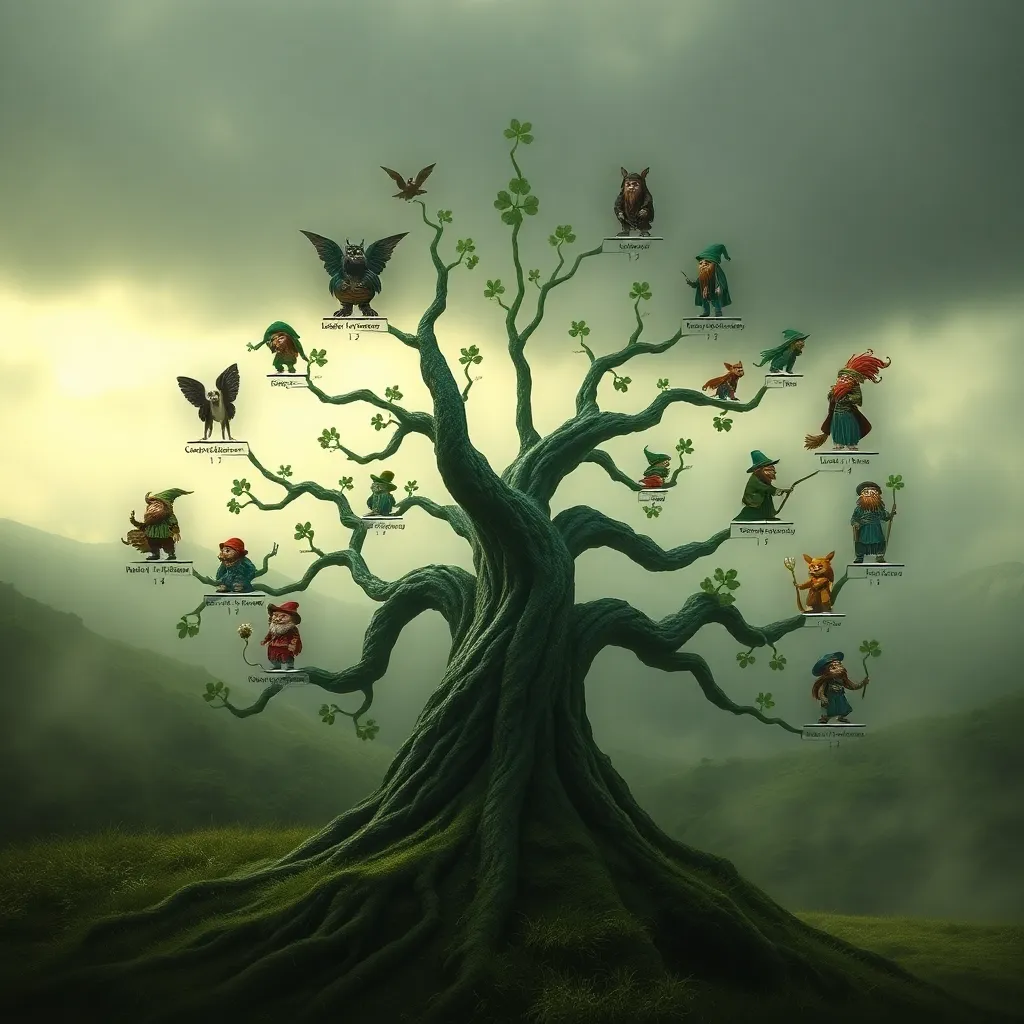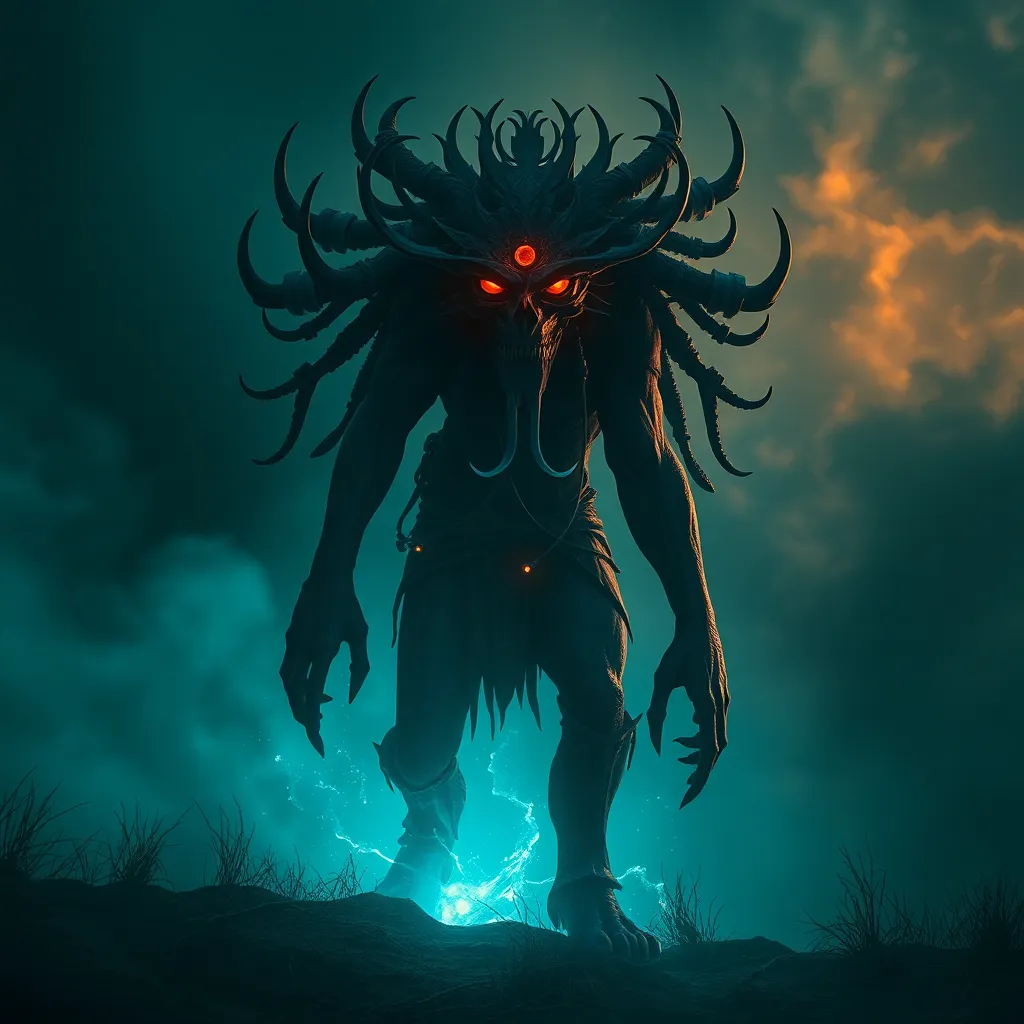The Hundred-Handed Giants: Exploring the Hecatoncheires in Greek Myth
I. Introduction to the Hecatoncheires
The Hecatoncheires, also known as the hundred-handed giants, are fascinating figures in Greek mythology that embody the themes of chaos and power. Their name derives from the Greek words ‘hekaton,’ meaning one hundred, and ‘cheir,’ meaning hand. These colossal beings are often portrayed as monstrous in stature, possessing unique characteristics that set them apart from other mythological creatures.
Significantly, the Hecatoncheires represent the primal forces of nature, showcasing the tumultuous aspects of creation and destruction. Their existence exemplifies the duality of strength and vulnerability, making them essential to the rich tapestry of Greek myths.
II. Origins of the Hecatoncheires
The Hecatoncheires were born from the primordial deities Uranus (the sky) and Gaia (the earth). According to myth, they were among the first generations of beings created at the dawn of the universe, alongside the Titans and the Cyclopes. Their parentage signifies their importance in the hierarchy of mythological beings.
In the creation myth, after Uranus imprisoned the Cyclopes and the Hecatoncheires in Tartarus, Gaia sought revenge against him. She fashioned a great sickle and urged her son Cronus to overthrow Uranus. This act of rebellion led to the release of the Hecatoncheires, who would later play a critical role in the battle between the Titans and the Olympian gods.
III. Physical Attributes and Powers
The Hecatoncheires are described as having one hundred hands and fifty heads, making them incredibly formidable figures in mythology. Each of their hands is said to be capable of immense strength, allowing them to wield tremendous power in battle. Their numerous heads gave them a unique advantage, enabling them to see in all directions and strategize effectively during conflicts.
Some of their notable abilities include:
- Unmatched strength and endurance, capable of altering the course of battles.
- Extraordinary speed, allowing them to react quickly to threats.
- Possession of a multitude of voices, which could cause confusion among enemies.
Their physical attributes not only signify their power but also their ability to instill fear and awe in those who witnessed their might.
IV. The Hecatoncheires in the Titanomachy
The Titanomachy, the epic war between the Titans and the Olympian gods, is a crucial part of the Hecatoncheires’ narrative. After being released from Tartarus by Zeus, the Hecatoncheires allied themselves with the Olympians, marking a significant turning point in the battle.
Their involvement was pivotal; they fought alongside the gods against the Titans, using their immense strength to hurl boulders and projectiles at their foes. This overwhelming force contributed significantly to the Olympians’ victory over the Titans, leading to the establishment of a new order in the cosmos.
In gratitude for their assistance, Zeus rewarded the Hecatoncheires by assigning them the role of guardians of the Titans, ensuring that they remained imprisoned in Tartarus and preventing any potential resurgence of Titan power.
V. Symbolism and Themes Associated with the Hecatoncheires
The Hecatoncheires symbolize chaos and raw power within Greek mythology. Their hundred hands represent the overwhelming force of nature, while their fifty heads embody the complexity of existence and the multifaceted nature of creation and destruction.
Key themes associated with the Hecatoncheires include:
- Chaos and Order: They represent the chaotic forces that existed before the establishment of order by the Olympian gods.
- Strength and Vulnerability: While they possess immense power, their initial imprisonment reflects the vulnerability even the strongest beings can face.
This duality serves as a reminder of the balance between chaos and order, strength and vulnerability, which resonates in many aspects of life and storytelling.
VI. The Hecatoncheires in Art and Literature
The Hecatoncheires have been depicted in various forms of ancient Greek art and literature, showcasing their significance in the cultural imagination. They are often portrayed in sculptures, pottery, and frescoes, emphasizing their monstrous size and formidable presence.
In classical literature, the Hecatoncheires are mentioned in works by authors such as Hesiod and Apollodorus, who describe their roles in the cosmological narratives of Greek mythology. Modern interpretations of the Hecatoncheires continue to appear in literature, film, and other media, often symbolizing overwhelming forces or chaotic elements in stories.
VII. Comparative Analysis: Hecatoncheires in Other Mythologies
The Hecatoncheires bear similarities to giants and monstrous beings found in other mythologies around the world. For instance:
- In Norse mythology, the Jötunn (giants) represent chaotic forces often in opposition to the gods.
- The biblical Nephilim are described as giants and can be seen as a parallel to the Hecatoncheires in their size and strength.
These comparisons highlight the universal theme of powerful giant figures in mythology, representing the struggle between chaos and order. The Hecatoncheires have also influenced later mythological figures, inspiring the portrayal of giants in various cultural narratives.
VIII. Conclusion: The Legacy of the Hecatoncheires in Modern Culture
The legacy of the Hecatoncheires continues to thrive in contemporary storytelling and media. Their representation of chaos and power resonates with audiences, making them relevant figures in modern narratives. They appear in various forms, from fantasy novels to blockbuster films, embodying the themes of strength and vulnerability.
Additionally, the Hecatoncheires serve as a reflection on the complexity of existence, reminding us of the delicate balance between order and chaos. Their enduring symbolic significance encourages exploration of these themes in both literature and art, ensuring that the hundred-handed giants remain a vital part of the cultural landscape.



